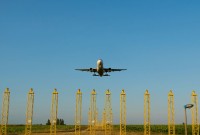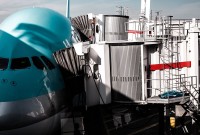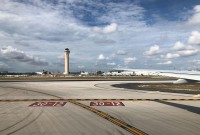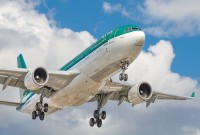- Home
- Business Processes
- Industry Knowledge
- Aerospace Industry
- Automotive Industry
- Banking Domain
- BFSI Industry
- Consumer/ FMCG Industry
- Chemicals Industry
- Engineering & Construction
- Energy Industry
- Education Domain
- Finance Domain
- Hospitality Domain
- Healthcare Industry
- Insurance Domain
- Retail Industry
- Travel and Tourism Domain
- Telecom Industry
- Leadership Skills
- eLearning
- Home
- Industry Knowledge
- Aerospace Industry
- Civil Aerospace: Commercial Avionics Industry
Civil Aerospace: Commercial Avionics Industry
Commercial avionics refers to cockpit electronics and airborne equipment, although it doesn't include antennas, recorders, or other passenger-only cabin systems. Avionics is referred to denote the electronic systems that are utilized in aircraft.
Commercial avionics refers to cockpit electronics and airborne equipment, although it doesn't include antennas, recorders, or other passenger-only cabin systems. Avionics is referred to denote the electronic systems that are utilized in aircraft, spacecraft as well as artificial satellites. The modern-day digital avionics/aircraft systems are intricate in their own ways and this makes commercial avionics a specialized industry. There are four main products manufactured in this subsector:
Commercial Avionics Products:
Communications: This subsector includes communications, flight controls, and flight management equipment
Navigation: This subsector includes aircraft sensors and navigation equipment and systems
Surveillance: This subsector includes data management equipment and surveillance systems
Avionics Integration: This includes avionics integration systems
Commercial Avionics Products Categories:
- Communications
- Flight Controls
- Displays
- Flight Management
- Aircraft Sensors
- Data Management
- Integrated Avionics
- Navigation
- Surveillance Systems
Importance of Aircraft Avionics in the Aviation Industry:
The term aircraft avionics was first used in the earlier half of the 1950’s in the USA to denote the system that depends on as well as an exploit, the electronic technology in the aviation segment. The services in this regard consist of software and hardware engineering, mechanical avionics design and development, control systems and instrumentation engineering, engineering analysis, automated test equipment, manufacturing engineering, simulation software development, technical publications, and manufacturing.
Few other selected important features include Flight Warning Systems, Flight Control Systems (FCS), Flight Management Systems (FMS), Navigation and Surveillance (CNS) Systems, Engine Control, Communication, Hydraulic Systems, Landing Gear Systems, Electrical Power Systems, Environmental Systems, Electronic Flight Instrumentation System (EFIS), Engine Testbeds, Fire Protection System, Simulators, Ground Support Equipment and the like.
Industry Analysis & Industry Trends:
Avionics market of almost $105 billion combined for forward-fit and retrofit market segments is forecasted in 2020. Markets will witness a shift toward larger wide-body aircraft deliveries during the forecast period with narrow body replacements from Airbus and Boeing entering service between 2020 and 2025.
The growth in the individual parts of integrated modular avionics (IMA), glass cockpits, and enhanced awareness devices will go a long way in shaping the future of the market. For instance, both 787 and A350 use IMA, opening up a new window of opportunity for component manufacturers. Glass cockpits are also the expected configuration among new air transport aircraft and are becoming a regular fitting in new business and general aviation aircraft. Glass cockpits are now the standard, even in piston aircraft. Enhanced vision systems, synthetic vision systems, and heads-up displays are also making inroads into the market. Avionics manufacturers have to rely on newer technologies for growth opportunities. Older aircraft could need significant hardware changes to comply with the 2020 U.S. implementation date of the Automatic Dependent Surveillance-Broadcast (ADS-B) and the related Required Navigation Performance programs.
Suggested Reading and Resources
Related Links
You May Also Like
-
Aerospace Industry - The Competitive Landscape
This article provides an overview of the competitive landscape of the aerospace industry. Read how the compaction is shaped up across the US and the globe, followed by a detailed discussion of the top 5 players in the sector in terms of revenue.
-
Application of Aviation in Military – A Short History
Aerospace is an industry that has a history of about a century in the defense space. This article discusses how the historic flight of the Wright brothers in 1908 gave birth to the aerospace defense industry that today employs 850K people in the US only.
-
Challenges in the Aerospace and Defense Industry
New market dynamics are dramatically changing the way A&D companies serve their customers, collaborate with partners, and take ideas and solutions to the market. Given below are several vitally important challenges that are currently confronting the aerospace and defense industry and strategies to mitigate them.
-
Key Sectors of Aerospace and Defense Industry
Understand the categorization of the aerospace industry to various sectors based on the services it currently provides. Understand the key constituents under these sectors and activities under each of these sectors.
-
Civil Aerospace - Commercial Simulation and Training
Training people how to operate and maintain today’s sophisticated aircraft as well as on-board and ground support systems can be very complex and costly. To be effective, the training environment must accurately simulate the features and capabilities of the actual systems in a wide range of operating scenarios. Commercial modeling, visual simulation, flight simulation, and computer-based training are the key methods used by this subsector.
-
Military & Defense Aerospace Sector – Sector Profile
In this article, we will discuss the important sub-sectors of the Military & Defense Aerospace Sector namely military aircraft manufacturing and military avionics, maintenance, repair, and overhaul (MRO), missiles, C4ISR, and related services and modeling, simulation, and training.
-
Civil Aviation Sector – A brief History
The civil aviation sector has transformed itself during the last hundred years. There has been massive technological development in passenger traffic and comfort and now the civil aviation industry accounts for approximately 30% of the overall aerospace industry. A brief account of civil aviation history is presented in this article.
-
Aerospace Industry: The Business Model
In this article, we will discuss the value chain of the Aerospace Industry and will define the generic business model to understand the key process areas in the aerospace industry. This will provide you with a basic understanding of key activities in the industry.
-
Civil Aerospace: Civil Aircraft Manufacturing Industry
This article discusses sectors within the Civil Aerospace Sector and its subsectors, products, and services. This article provides an overview of the definition, industry products, industry activities, and global locations.
-
Civil Aerospace: Commercial Avionics Industry
Commercial avionics refers to cockpit electronics and airborne equipment, although it doesn't include antennas, recorders, or other passenger-only cabin systems. Avionics is referred to denote the electronic systems that are utilized in aircraft.
Explore Our Free Training Articles or
Sign Up to Start With Our eLearning Courses

About Us
Learning
© 2023 TechnoFunc, All Rights Reserved









